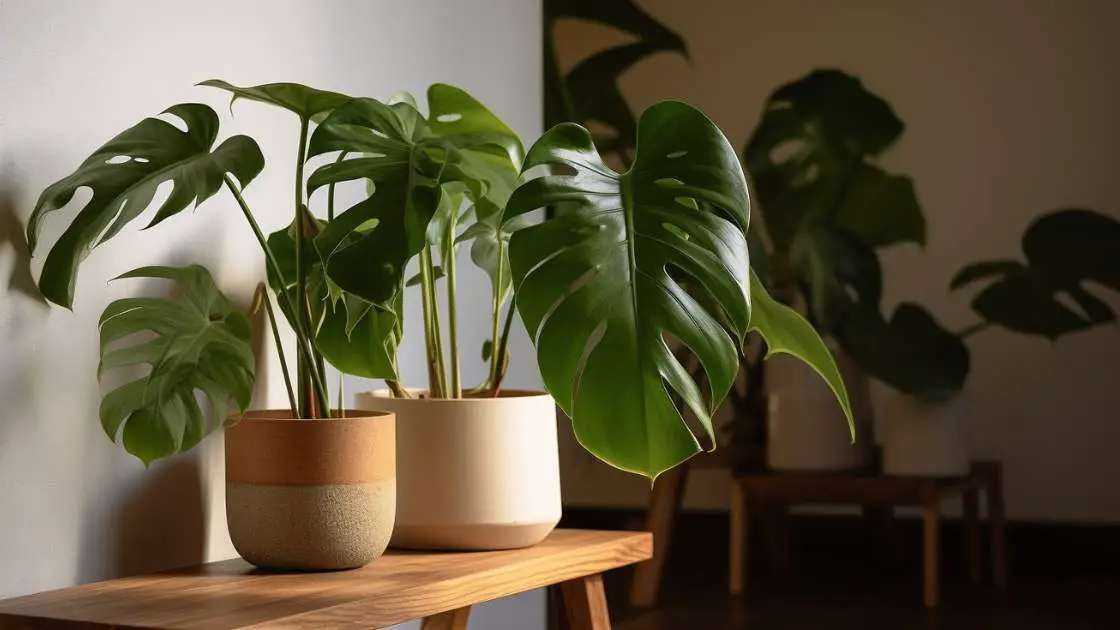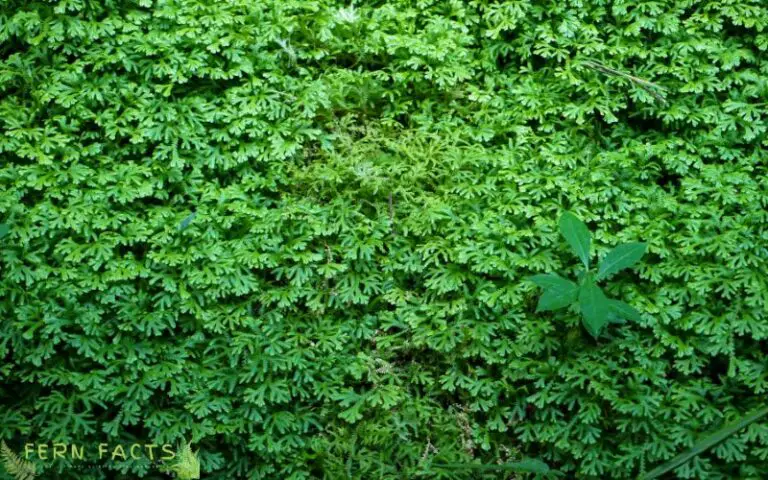Monstera Leaves Browning: Revive Your Plant Now!
Monstera leaves browning can be caused by overwatering, underwatering, or low humidity. Proper care can prevent and remedy this issue.
Monstera plants, known for their striking leaves, are popular houseplants. Browning leaves can be a sign of underlying problems.
Overwatering leads to root rot, causing leaf discoloration. On the other hand, underwatering stresses the plant, resulting in dry, crispy leaf edges.
Low humidity is another common culprit, as these tropical plants thrive in moist conditions. Regularly checking soil moisture and maintaining adequate humidity levels can keep your Monstera healthy.
Additionally, placing it in a spot with indirect sunlight ensures optimal growth. Understanding and addressing these factors allows you to enjoy vibrant and green Monstera leaves year-round.
Proper care and attention are key to preventing browning and maintaining plant health.
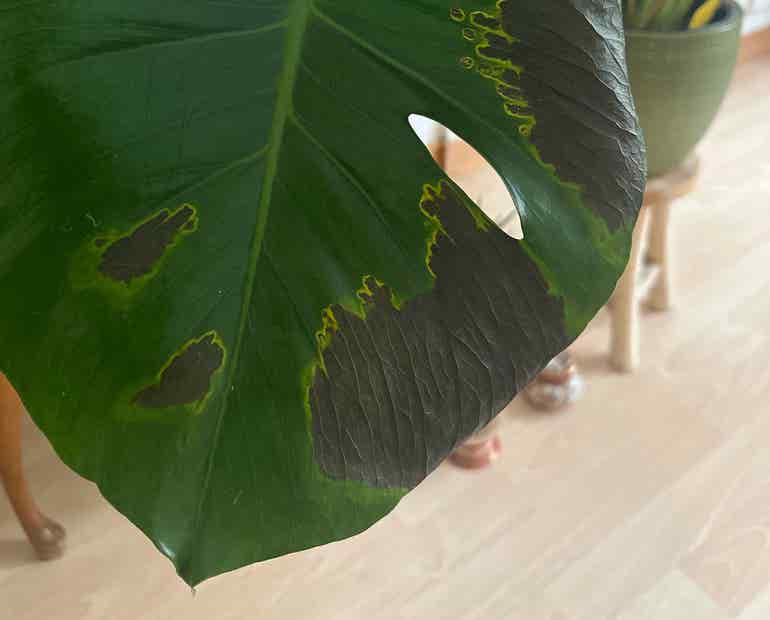
Understanding Monstera Leaves Browning
Monstera plants are beloved for their large, glossy, and uniquely split leaves. But what happens when those beautiful leaves start to brown?
Understanding Monstera leaves browning is crucial for keeping your plant healthy and vibrant. Browning can indicate various problems, from environmental stress to nutritional deficiencies.
Let’s dive into the common causes and symptoms to help you diagnose and treat your Monstera effectively.
Common Causes Of Browning
Several factors can cause Monstera leaves to brown. Recognizing these causes early can help prevent further damage.
- Overwatering: Excessive watering can lead to root rot, causing the leaves to turn brown.
- Underwatering: Lack of water stresses the plant, resulting in brown leaf edges.
- Direct Sunlight: Too much direct sunlight can scorch the leaves, leading to browning.
- Low Humidity: Monsteras prefer high humidity. Dry air can cause the leaves to dry out and brown.
- Nutrient Deficiency: A lack of essential nutrients like nitrogen can cause browning.
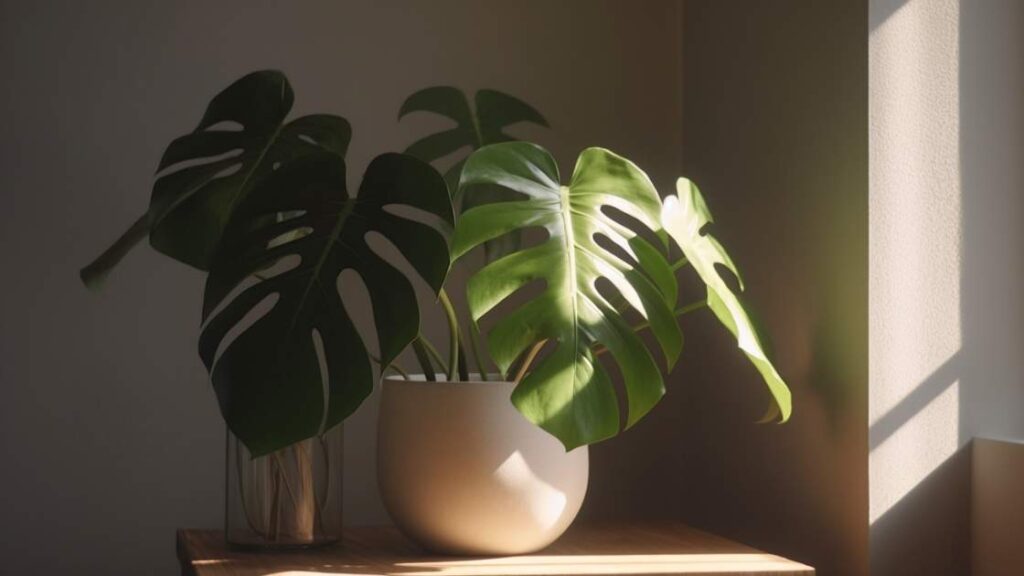
Here’s a table summarizing the common causes:
| Cause | Description |
|---|---|
| Overwatering | Leads to root rot and browning leaves. |
| Underwatering | Causes stress and browning edges. |
| Direct Sunlight | Scorches leaves, causing browning. |
| Low Humidity | Dries out leaves, leading to browning. |
| Nutrient Deficiency | Lack of nutrients like nitrogen causes browning. |
Symptoms To Look Out For
Identifying the symptoms of browning leaves can help you determine the underlying issue. Here are some key symptoms:
- Brown Tips: Often a sign of underwatering or low humidity.
- Yellowing Before Browning: Indicates overwatering or poor drainage.
- Scorched Patches: Caused by too much direct sunlight.
- Crispy Edges: A result of dry air or nutrient deficiencies.
- Uniform Browning: Indicates a severe issue, such as root rot or significant nutrient deficiency.
Here’s a quick reference table of symptoms and their potential causes:
| Symptom | Potential Cause |
|---|---|
| Brown Tips | Underwatering or low humidity |
| Yellowing Before Browning | Overwatering or poor drainage |
| Scorched Patches | Direct sunlight |
| Crispy Edges | Dry air or nutrient deficiencies |
| Uniform Browning | Root rot or severe nutrient deficiency |
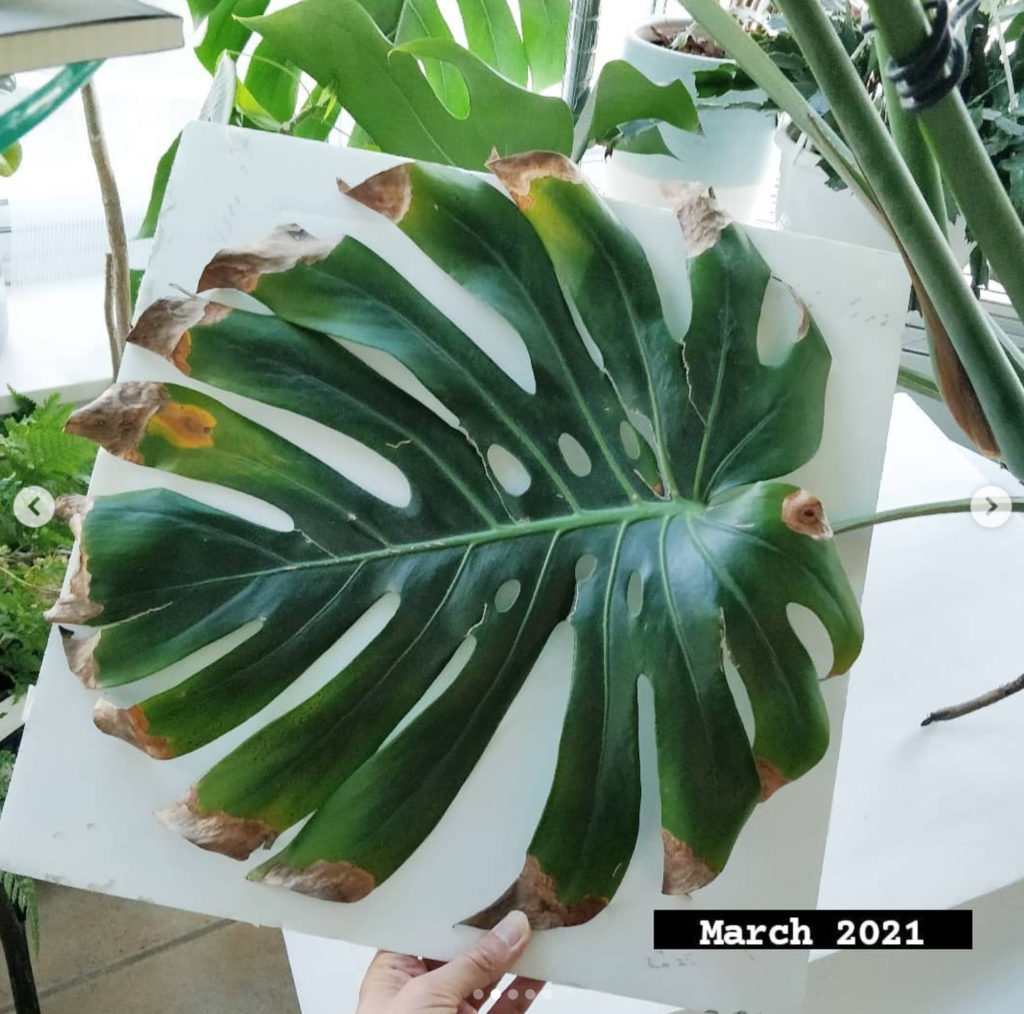
Prevention And Treatment For Monstera Leaves Browning
Monstera leaves browning is a common issue that can affect the beauty and health of your plant.
Understanding the causes and implementing effective prevention and treatment strategies can help keep your Monstera thriving.
This guide will cover proper watering techniques, humidity control, lighting requirements, and soil and fertilization tips to prevent and treat browning leaves.
Proper Watering Techniques
One of the most common reasons for Monstera leaves browning is improper watering. Both overwatering and underwatering can cause this issue. Ensuring the right amount of water is crucial for the health of your Monstera.
Key watering tips:
- Check soil moisture: Insert your finger about an inch into the soil. Water the plant if the soil feels dry.
- Water thoroughly: Ensure water drains out of the bottom of the pot. This prevents water from sitting at the roots.
- Use room-temperature water: Cold water can shock the plant roots, leading to browning leaves.
- Reduce watering in winter: Monsteras need less water during colder months. Adjust your watering schedule accordingly.
Avoid letting the plant sit in waterlogged soil. This can lead to root rot, which is often fatal.
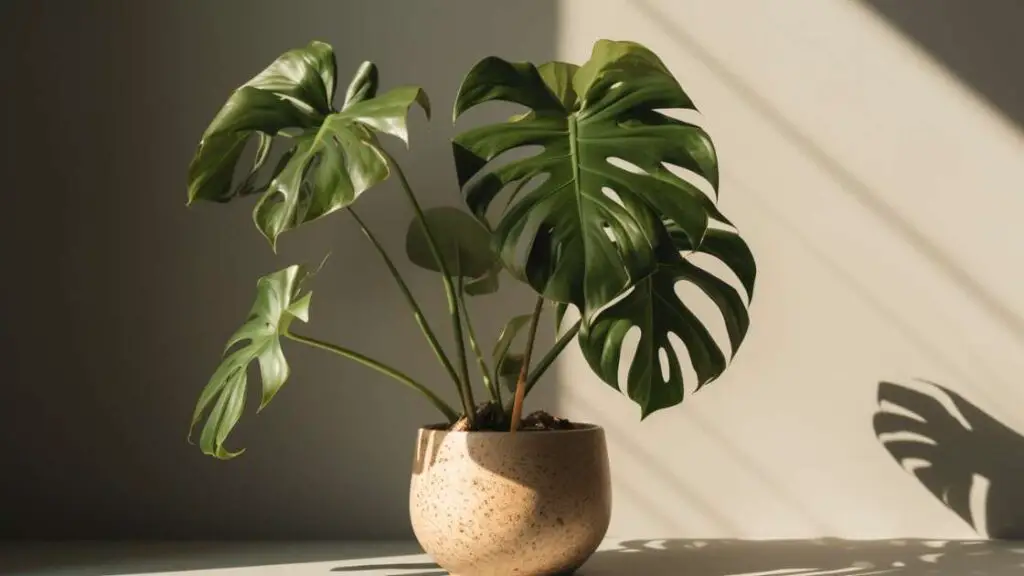
Humidity Control
Monsteras thrive in environments with high humidity.
Low humidity can cause the edges of the leaves to turn brown and crispy.
Effective humidity control tips:
- Use a humidifier: Place a humidifier near your plant to maintain optimal humidity levels.
- Mist the leaves: Lightly mist the leaves with water to increase humidity around the plant.
- Group plants together: Grouping plants can create a microenvironment with higher humidity.
- Place on a pebble tray: Fill a tray with pebbles and water. Place the pot on the tray. The evaporating water increases humidity.
Maintaining humidity levels between 60-80% is ideal for Monstera plants.
Lighting Requirements
Proper lighting is essential for Monstera plants. Insufficient or excessive light can cause leaf browning.
Lighting tips:
- Bright, indirect light: Place the Monstera in a spot with bright, indirect light. Avoid direct sunlight as it can scorch the leaves.
- Use sheer curtains: If the plant is near a window, use sheer curtains to filter the light.
- Rotate the plant: Rotate the plant occasionally to ensure even light exposure.
- Supplement with grow lights: Use grow lights to provide adequate lighting in low-light conditions.
Ensuring the plant receives 6-8 hours of bright, indirect light daily helps prevent browning leaves.
Soil And Fertilization Tips
Proper soil and fertilization are crucial for the health of your Monstera.
Poor soil quality and incorrect fertilization can lead to browning leaves.
Soil and fertilization tips:
- Use well-draining soil: A mix of potting soil, peat moss, and perlite ensures good drainage and aeration.
- Fertilize during the growing season: Apply a balanced, water-soluble fertilizer every 4-6 weeks during spring and summer.
- Avoid over-fertilizing: Too much fertilizer can burn the roots and cause leaf browning.
- Flush the soil: Every few months, flush the soil with water to remove excess salts and fertilizer buildup.
Ensuring your Monstera receives the right nutrients and has well-draining soil helps maintain healthy, green leaves.
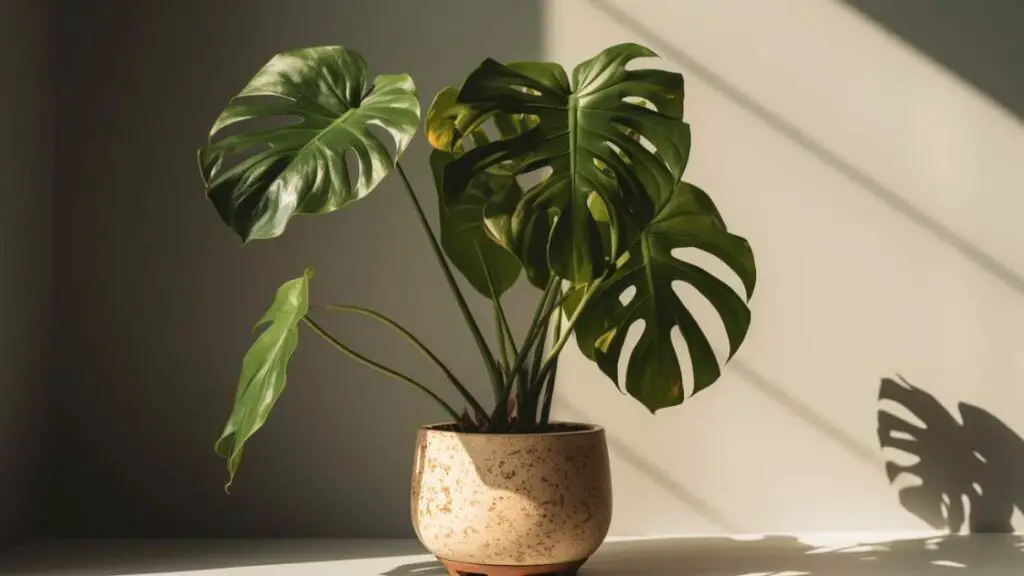
Pruning And Maintenance
Monstera plants are beloved for their striking, glossy leaves. But seeing those beautiful leaves turn brown can be disheartening.
Proper pruning and maintenance are essential to keep your Monstera healthy and vibrant. This section dives into the best practices for trimming browned areas and cleaning the leaves to ensure your plant thrives.
Trimming Browned Areas
Trimming browned areas from your Monstera leaves helps the plant focus its energy on healthy growth.
Here are some steps to follow:
- Use sharp, clean scissors or pruning shears to avoid damaging the plant.
- Identify the browned sections. Trim only the affected parts, leaving healthy tissue intact.
- Cut at a 45-degree angle to prevent water pooling on the cut surface.
- Dispose of the trimmed leaves properly to prevent the spread of any diseases.
Regular trimming prevents the spread of browning and improves the overall appearance of your Monstera.
Here’s a quick reference table to guide you:
| Step | Description |
|---|---|
| Tools | Use sharp, clean scissors or pruning shears. |
| Identify | Locate the browned areas. |
| Trim | Cut at a 45-degree angle, removing only the damaged parts. |
| Dispose | Properly discard the trimmed leaves. |
Leaf Cleaning
Keeping Monstera leaves clean is crucial for their health. Dust and dirt can block sunlight and hinder photosynthesis.
Follow these steps to keep the leaves clean:
- Use a soft, damp cloth to wipe down each leaf gently.
- For stubborn dirt, mix a solution of water and mild soap. Dip the cloth in the solution and clean the leaves.
- Rinse the leaves with clean water to remove any soap residue.
- Dry the leaves with a soft towel to prevent water spots.
Regular leaf cleaning keeps your Monstera looking fresh and healthy.
Here’s a summary of the cleaning steps:
| Step | Description |
|---|---|
| Wipe | Use a soft, damp cloth to gently wipe each leaf. |
| Clean | Use a soft, damp cloth to wipe each leaf gently. |
| Rinse | Rinse the leaves with clean water. |
| Dry | Dry the leaves with a soft towel. |
Pest Control
Monstera leaves browning can be a gardener’s nightmare. One key reason for this issue is pests. Effective pest control is vital for keeping your Monstera healthy.
Let’s explore how to identify common pests and methods to control them.
You can also read this content to learn about 8 Plants and Herbs that Keep Bugs Away
Identifying Common Pests
Knowing which pests target your Monstera is the first step. Here are some common pests:
- Spider Mites: Tiny red or white dots, often found on the undersides of leaves.
- Mealybugs: White, cotton-like clusters on stems and leaves.
- Scale Insects: Brown or black bumps on leaves and stems.
- Aphids: Small green or black insects that gather in clusters.
Check the following table for quick identification:
| Pest | Appearance | Location |
|---|---|---|
| Spider Mites | Tiny red or white dots | Undersides of leaves |
| Mealybugs | White, cotton-like clusters | Stems and leaves |
| Scale Insects | Brown or black bumps | Leaves and stems |
| Aphids | Small green or black insects | Clusters on leaves |
Natural Remedies
Using natural remedies can be effective and eco-friendly. Here are some methods:
- Neem Oil: Mix neem oil with water and spray on affected areas.
- Soap Solution: Mix mild soap with water and spray on pests. Avoid harsh soaps.
- Alcohol Swabs: Use cotton swabs dipped in alcohol to remove visible pests.
- Beneficial Insects: Introduce ladybugs or predatory mites to eat the pests.
Using these methods can help you keep your Monstera healthy without chemicals:
- Mix neem oil with water in a spray bottle.
- Spray the solution on the leaves and stems.
- Repeat weekly for best results.
- Monitor your plant for any signs of pests returning.
Remember, consistency is key. Always check your plant regularly.
Chemical Treatments
Sometimes, natural remedies are not enough. Chemical treatments can be the next step. Here are some options:
- Insecticidal Soaps: Safe for indoor plants. Follow the instructions on the label.
- Systemic Insecticides: Absorbed by the plant to kill pests from within.
- Miticides: Specifically target mites. Use as directed.
Follow these steps for effective chemical treatment:
- Read the label instructions carefully.
- Apply the insecticide to the affected areas.
- Ensure good ventilation when applying indoors.
- Keep pets and children away from treated plants.
Always wear gloves and protective clothing when using chemicals. Monitor your Monstera after treatment. Repeat if necessary.
Reviving A Monstera Plant
Monstera leaves browning can be alarming for plant lovers. Browning leaves usually mean the plant is stressed. But don’t worry.
Reviving a Monstera plant is possible with the right steps. Following a few simple guidelines can help your Monstera thrive once again.
Steps To Revive Browning Leaves
To revive browning Monstera leaves, follow these steps:
- Inspect the leaves: Check for signs of pests or diseases. Look for tiny insects or spots.
- Adjust watering: Overwatering or underwatering can cause browning. Ensure the soil is moist but not soggy.
- Check humidity levels: Monstera plants love humidity. Aim for 60% humidity or higher.
- Provide adequate light: Place the plant in bright, indirect sunlight. Avoid direct sun exposure.
- Prune-damaged leaves: Use clean scissors to remove brown or yellow leaves. This helps the plant focus on new growth.
Here is a quick reference table to help you:
| Step | Action | Details |
|---|---|---|
| Inspect Leaves | Check for pests | Look for insects or spots |
| Adjust Watering | Balance moisture | Ensure soil is moist, not soggy |
| Check Humidity | Increase humidity | Aim for 60% or higher |
| Provide Light | Bright, indirect light | Avoid direct sunlight |
| Prune Leaves | Remove damaged leaves | Use clean scissors |
Monitoring Progress
After following the revival steps, monitoring your Monstera’s progress is important.
- Weekly check-ins: Examine the leaves every week. Look for new growth or further browning.
- Adjust care as needed: If leaves continue browning, reassess your care routine. Double-check light, water, and humidity levels.
- Document changes: Keep a journal. Note any changes in the plant’s condition. This helps identify patterns.
Use this table to track your Monstera’s health:
| Week | Observations | Actions Taken |
|---|---|---|
| 1 | Initial inspection | Adjusted watering, increased humidity |
| 2 | New growth observed | Maintained care routine |
| 3 | Some leaves browning | Reassessed light exposure |
Remember, patience is key. Revival can take time. Stay consistent with your care; your Monstera will thank you with lush green leaves.
Frequently Asked Questions
Why Is My Monstera Leaves Turning Brown?
Monstera leaves turn brown due to improper watering, low humidity, or too much sunlight. Ensure your plant gets indirect light and maintain consistent watering. Increase humidity if needed.
How Do I Fix Brown Monstera Leaves?
To fix brown leaves, adjust watering habits and increase humidity. Ensure your Monstera gets indirect sunlight. Trim affected leaves to promote new growth.
Can Overwatering Cause Monstera Leaves To Brown?
Yes, overwatering can cause Monstera leaves to brown. Ensure the soil drains well. Let the top inch dry before watering again.
Does Low Humidity Affect Monstera Leaves?
Low humidity can cause Monstera leaves to brown. Increase humidity by misting the leaves or using a humidifier. Group plants together for better humidity.
Conclusion
Browning Monstera leaves signal a need for attention. Address watering, light, and humidity issues promptly. Regular care ensures lush, vibrant leaves.
Keep your Monstera healthy by following these simple tips. Your plant will thrive and enhance your home’s beauty.
Don’t overlook these signs; a little care goes a long way.

